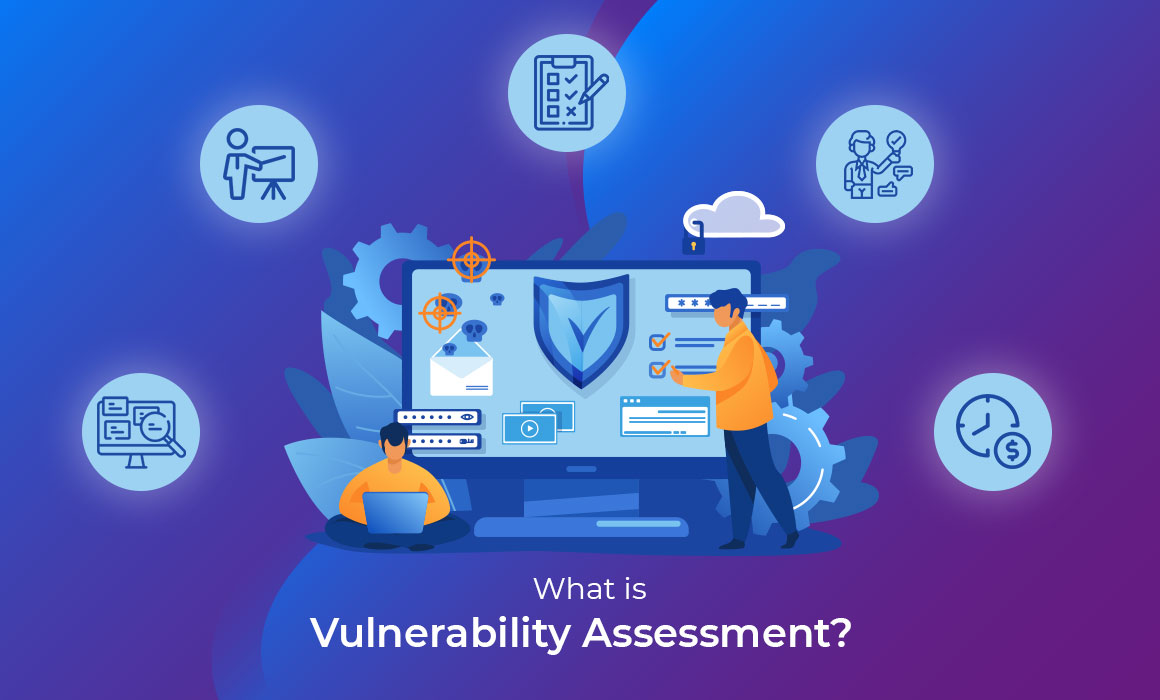
Vulnerability Assessment- Why you need this?
Imagine this: You’re the IT manager of a mid-sized e-commerce company. Business is booming, and your website is processing thousands of transactions daily. One morning, you wake up to a nightmare—your website is down, customer data has been stolen, and your company’s reputation is in shambles. The cause? A simple vulnerability in your web application that you didn’t even know existed.
This scenario isn’t just hypothetical—it happens to businesses every day. In 2023 alone, over 60% of small to medium-sized businesses reported experiencing a cyberattack, many of which could have been prevented with a proper vulnerability assessment.
So, what exactly is a vulnerability assessment, and why is it so critical in today’s digital world? Let’s dive in.
What is a Vulnerability Assessment?
A vulnerability assessment is the process of identifying, classifying, and prioritizing weaknesses in your systems, networks, or applications. Think of it as a health check-up for your digital infrastructure. Just like you’d visit a doctor to catch potential health issues before they become serious, a vulnerability assessment helps you catch security flaws before they’re exploited by attackers.
The goal isn’t just to find vulnerabilities—it’s to understand their potential impact and take steps to mitigate them. This proactive approach is what separates businesses that survive cyberattacks from those that don’t.
Real-World Scenarios: Why Vulnerability Assessments Matter
1. The Equifax Breach: A Costly Oversight
In 2017, Equifax, one of the largest credit reporting agencies in the world, suffered a massive data breach that exposed the personal information of 147 million people. The cause? A vulnerability in the Apache Struts framework, a widely used open-source software.
The kicker? A patch for this vulnerability had been available for months before the breach occurred. Equifax simply didn’t know the vulnerability existed because they hadn’t conducted a thorough vulnerability assessment. The result? A settlement of over $700 million and a permanent stain on their reputation.
2. The Target Breach: A Third-Party Weakness
In 2013, retail giant Target fell victim to a cyberattack that compromised 40 million credit and debit card numbers. The attackers gained access through a third-party HVAC vendor whose systems were connected to Target’s network.
A vulnerability assessment could have identified the weak link in Target’s supply chain and prevented the breach. Instead, Target faced lawsuits, lost customer trust, and spent over $200 million recovering from the incident.
3. The WannaCry Ransomware Attack: Unpatched Systems
In 2017, the WannaCry ransomware attack infected over 200,000 computers across 150 countries, crippling hospitals, businesses, and government agencies. The ransomware exploited a vulnerability in Microsoft Windows that had been patched months earlier.
Organizations that had conducted regular vulnerability assessments and applied patches were unaffected. Those that hadn’t? They were left scrambling to recover their data and paying hefty ransoms.
The Vulnerability Assessment Process: How It Works
A vulnerability assessment typically follows these steps:
Discovery: Identify all assets in your environment, including servers, applications, network devices, and even IoT devices.
Scanning: Use automated tools like Nessus, Qualys, or OpenVAS to scan for known vulnerabilities.
Analysis: Evaluate the severity of each vulnerability based on factors like exploitability, potential impact, and the value of the affected asset.
Reporting: Create a detailed report that outlines the vulnerabilities, their risks, and recommended remediation steps.
Remediation: Patch, configure, or mitigate the vulnerabilities to reduce your risk.
Reassessment: Repeat the process regularly to stay ahead of new threats.
Why Vulnerability Assessments Are Often Overlooked
Despite their importance, vulnerability assessments are often neglected. Here’s why:
“We’re Too Small to Be Targeted”: Many small businesses assume they’re not on hackers’ radar. In reality, attackers often target smaller organizations because they’re easier to breach.
“We Don’t Have the Budget”: Vulnerability assessments are often seen as an expense rather than an investment. But the cost of a breach far outweighs the cost of prevention.
“We’re Too Busy”: IT teams are often stretched thin, leaving little time for proactive security measures. However, neglecting vulnerabilities can lead to even more work down the line.
The ROI of Vulnerability Assessments
Let’s break it down with some numbers:
The average cost of a data breach in 2023 was $4.45 million.
The cost of a vulnerability assessment? Typically between 10,000, depending on the size of your organization.
Even if you find and fix just one critical vulnerability, you’ve potentially saved your organization millions of dollars—not to mention the intangible costs like reputational damage and lost customer trust.
Tips for Getting Started with Vulnerability Assessments
Start Small: If you’ve never done a vulnerability assessment before, start with your most critical systems. Gradually expand to cover your entire environment.
Automate Where Possible: Use automated tools to scan for vulnerabilities regularly. This saves time and ensures nothing slips through the cracks.
Prioritize Remediation: Focus on fixing the most critical vulnerabilities first. Use a risk-based approach to allocate your resources effectively.
Educate Your Team: Ensure your IT team understands the importance of vulnerability assessments and knows how to interpret the results.
Work with Experts: If you don’t have the in-house expertise, consider partnering with a cybersecurity firm to conduct your assessments.
Conclusion: Don’t Wait for the Breach
In today’s digital landscape, vulnerabilities are inevitable. New ones are discovered every day, and attackers are constantly looking for ways to exploit them. The question isn’t if you’ll be targeted—it’s when.
A vulnerability assessment isn’t just a nice-to-have—it’s a must-have. It’s your first line of defense against cyberattacks, your insurance policy against data breaches, and your peace of mind in an increasingly connected world.
So, don’t wait for the breach to happen. Take control of your security today. Because in the world of cybersecurity, an ounce of prevention is worth a pound of cure.